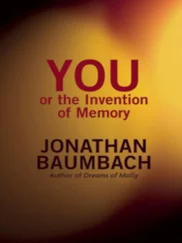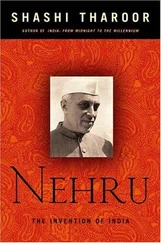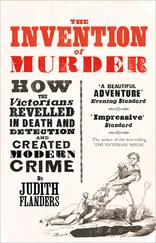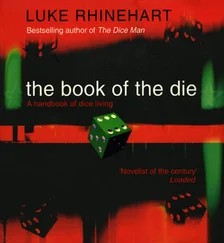My initial enthusiasm thus turned quickly into a cautious stance of principled skepticism. My intellectual training in a European tradition at once more theoretical and more historical than the American alerted me to the danger of characterizing as novel and unprecedented a phenomenon that must surely have had historical precedents or analogues. Indeed, the comparative social history of marginality in the industrial city, as represented by such classic studies as Friedrich Engels’s The Condition of the Working Class in England , Louis Chevalier’s Classes laborieuses, classes dangereuses , and Gareth Stedman Jones’s Outcast London , readily revealed that the intersection of capitalist industrialization and urbanization had repeatedly destabilized laboring populations and spawned the belief, among the coalescing bourgeoisie, that the city’s underbelly harbored culturally distinct, socially secluded, and vicious populations. 14The notion that the festering of these categories, Lumpenproletariat , underworld, bas-fonds , whatever the designation, posed an urgent moral and physical threat to the social order that called for innovative public policies designed to thwart it was not news either: had not the wave of beggars and vagrants that flooded the burgeoning cities of Northern Europe at the end of the sixteenth century led to the twin invention of poor relief, on the one side, and the penal prison, on the other? 15
My European skepticism grew into a gnawing American suspicion about the “underclass” when I turned to the arc of race, class, and space in Chicago over a century. Here I benefited from the fact that the Windy City is the most studied metropolis in America (if not the world), and so I delved into the rich lineage of historical inquiries that recapitulate the trajectory, structure, and experience of “Bronzeville.” Monographs on the topic cover a full century. Allan Spear’s pioneering Black Chicago: The Making of a Negro Ghetto, 1890–1920 recounts the birth of the “black city within the white,” while James Grossman’s Land of Hope probes the springs and consequences of the Great Migration of black Southerners to Chicago in the interwar years. St Clair Drake and Horace Cayton’s monumental Black Metropolis dissects the structure and experience of African-American social life at the apogee of the communal ghetto around the mid-twentieth-century point. Arnold Hirsch’s Making the Second Ghetto picks up the story of race, housing, and politics for the period 1940–60, focusing on the revamping of the dark ghetto from above via city, state, and federal policies. Bill Wilson’s watershed book, The Truly Disadvantaged , maps the hollowing out of the black inner city under the press of deindustrialization and class bifurcation after 1970. 16
Put together, these studies suggested permanence, recurrence, and novelty in the making of the “underclass.” Permanence of the sharp social and spatial division of the city by race; recurrence of phases of class consolidation and dissolution that caused tectonic shifts in city politics; novelty in the virulence of the territorial stigma draped over the remnants of the dark ghetto, amplified by the sulfurous corona of the “underclass” said to have emerged in their midst.
I grew frustrated as my efforts to articulate clearly what the “underclass” was designating confusedly proved vain: the more I read on the topic, the less it seemed to make sociological sense. My suspicion soon morphed into full-scale alarm as I attended the working seminars, think-tank meetings, and policy conferences on the topic to which Bill Wilson took me or dispatched me in his stead. Between 1987 and 1990, I was placed in the eye of the “underclass” storm and given a minor insider role in what the historian Alice O’Connor nicely christens “the poverty research industry” that was then in a state of intellectual flux and organizational recomposition. 17Armed with my foreign lenses and cushioned by historical reservations, I carried out rough fieldwork on the constitution of the mixed problematic of the “underclass” by scholars and experts based at the Brookings Institution, the Ford Foundation, the Rockefeller Foundation, Mathematica Policy Research Inc., the Joint Center for Political and Economic Studies, and the Urban Institute, as well as by researchers from leading universities across the country.
When the Rockefeller Foundation disbursed $6 million to the Social Science Research Council (SSRC) to launch a “Program of Research on the Urban Underclass” in 1988, I was invited to the two planning meetings. At the first meeting, the historian Michael Katz and I kept raising the question of the origins, meaning, and (mis)uses of the term “underclass.” The two program officers coordinating the Committee’s work were visibly embarrassed; they kept punting and would not so much as provide a working definition of the central notion motivating our presence. Other participants were stoically uninterested in dispelling the semantic fog around the “underclass” and were quite content to carry on with their mission regardless. Over a three-year period, I got to meet, hear, and engage the leading students of the topic; to bump into and tussle with top government experts and policy luminaries (including a vitriolic clash with none other than Daniel Patrick Moynihan that dismayed Bill Wilson); and to discover first-hand the concerns, styles, and strategies of the policy institutes and philanthropies taking the lead in constituting the academic-cum-policy nebula of the “underclass.”
I was also shocked to discover that the vast majority of the country’s leading experts on the question had never set foot in a poor black neighborhood and were constantly stuffing the gap between their macro-level data and everyday reality with racial commonplaces that are part of a national common sense I did not share. This discovery convinced me that, in order to break with what W.E.B. Du Bois calls “car-window sociology,” 18I needed to start from scratch through a historical-analytical reconstruction of the ghetto, on the one side, 19and from close-up observation of social relations at street level, on the other. For this, I resolved to find an observation post inside the hyperghetto to figure out from the ground up how the realities of class, race, and space shaped the social strategies and experience of young black men caught in the undertow of economic restructuring and state abandonment.
A series of chance circumstances led me to land in a boxing gym on the devastated thoroughfare of 63 rdStreet in Woodlawn, only two blocks from my home at the southern border of Hyde Park – but as distant experientially as another planet. 20I signed up to learn how to box as a conduit to get to know the club members; to my own surprise, I was drawn into the sensual and moral coils of pugilism and ended up apprenticing in the craft for three years. 21I followed my gym mates in their daily round and observed how they dealt with the labor market, family, welfare state, and police. This prompted me to question root and branch the existing conceptual apparatus of the sociology of caste and class in the American metropolis. Here was a cluster of men who, on paper , matched most definitions of the urban “underclass” and yet displayed a personal sense of order, a love of family, respect for authority, the pursuit of long-term goals, and an iron-clad work ethic. Pierre Bourdieu turned out to be right when he told me at the time that this boxing gym and its members would teach me more about the sociology of the (hyper)ghetto than all the tomes on the “underclass” I could read.
During the period when my intellectual distance from the ductile discourse on the “underclass” gradually grew, Bill Wilson and I had countless breakfasts and dinners during which we hashed out our epistemological, theoretical, and policy differences. It was an advanced tutorial in sociology the likes of which no university offers. He, patient, stolid, and confident in his ability to bend the policy debate to his scholarly arguments; I, irreverent, frenetic, and stubborn in my call of scientific purity above all. With his trademark intellectual generosity, in spite of our disagreements, Bill offered me to co-author with him the sequel to The Truly Disadvantaged , set to be entitled The American Underclass (the book that became When Work Disappears ). 22This was an enormously alluring offer to an impecunious graduate student, considering the mirific advance offered by the publisher Knopf. But I demurred, insisting that we first find out whether we could agree on the answer to this question: should we use the “underclass” as a tool for analysis, a formal construct with which to explore and parse the empirical world, or as an object of analysis, a historically dated discursive formation and collective belief about the remnants of the dark ghetto and its inhabitants? The present tome is a continuation of that dialogue and a closing of that chapter. This is why it is dedicated to Bill Wilson, with gratitude and affection.
Читать дальше












